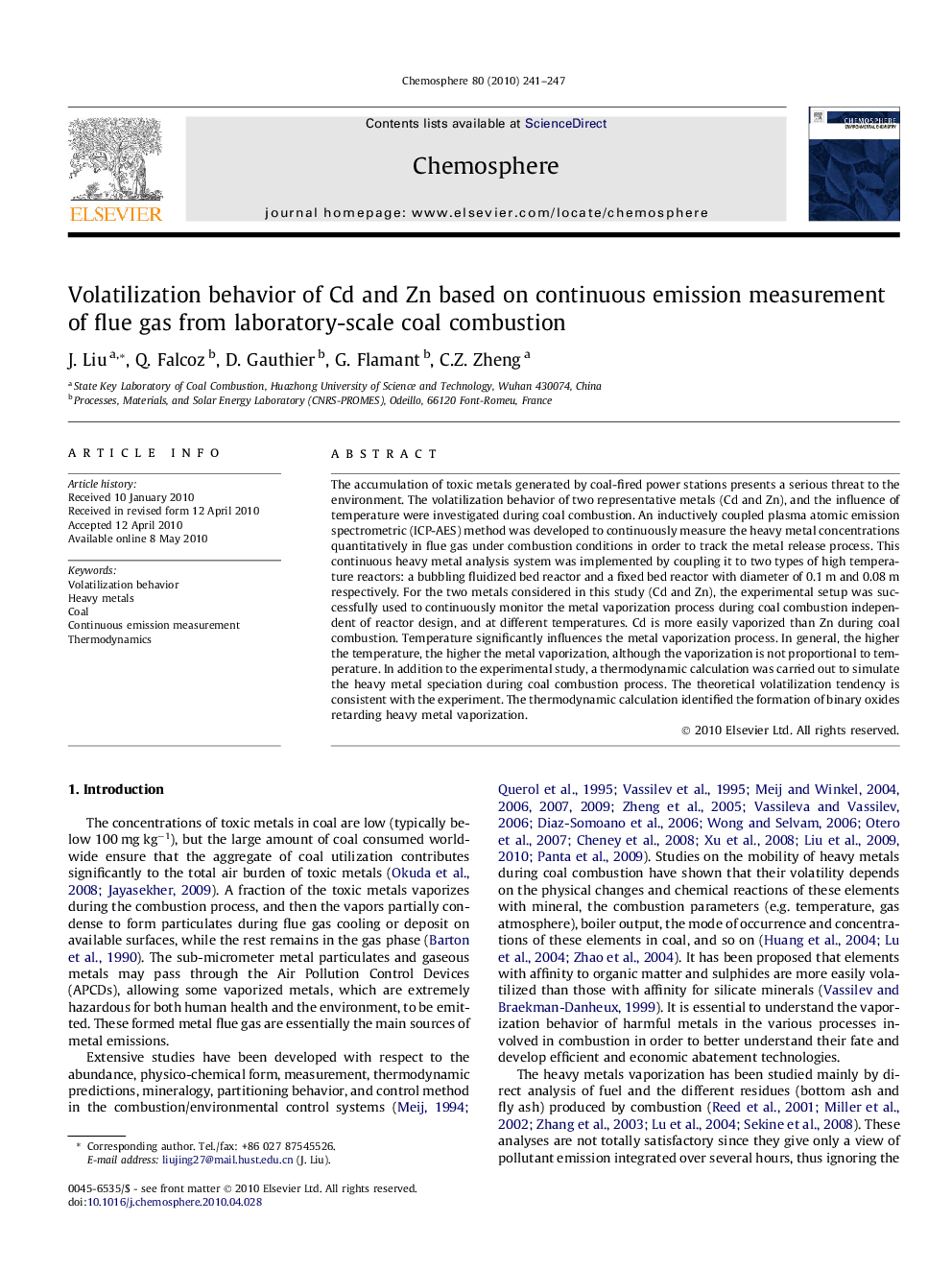| Article ID | Journal | Published Year | Pages | File Type |
|---|---|---|---|---|
| 4411615 | Chemosphere | 2010 | 7 Pages |
The accumulation of toxic metals generated by coal-fired power stations presents a serious threat to the environment. The volatilization behavior of two representative metals (Cd and Zn), and the influence of temperature were investigated during coal combustion. An inductively coupled plasma atomic emission spectrometric (ICP-AES) method was developed to continuously measure the heavy metal concentrations quantitatively in flue gas under combustion conditions in order to track the metal release process. This continuous heavy metal analysis system was implemented by coupling it to two types of high temperature reactors: a bubbling fluidized bed reactor and a fixed bed reactor with diameter of 0.1 m and 0.08 m respectively. For the two metals considered in this study (Cd and Zn), the experimental setup was successfully used to continuously monitor the metal vaporization process during coal combustion independent of reactor design, and at different temperatures. Cd is more easily vaporized than Zn during coal combustion. Temperature significantly influences the metal vaporization process. In general, the higher the temperature, the higher the metal vaporization, although the vaporization is not proportional to temperature. In addition to the experimental study, a thermodynamic calculation was carried out to simulate the heavy metal speciation during coal combustion process. The theoretical volatilization tendency is consistent with the experiment. The thermodynamic calculation identified the formation of binary oxides retarding heavy metal vaporization.
